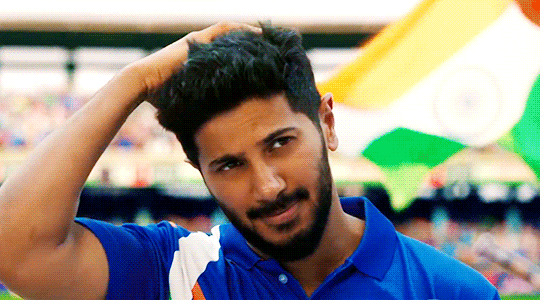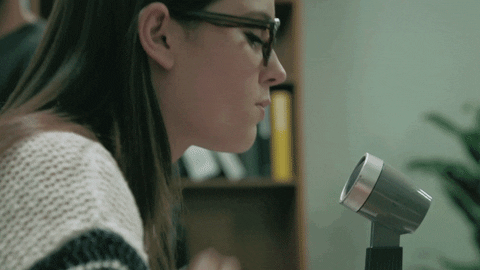Dear Reader,
A few newsletters ago, I’d included a link to an article on readers who brag about their reading. Back then, I’d read about these people as though I was reading about an exotic, members-only club of which I wouldn’t ever be a member. Well, if there’s a secret handshake, let me know because gods above, do I ever want to brag… .
Because boss, I read about 35 books, including one that weighs as much as an outsized human newborn, in what felt like a paltry amount of time (it wasn’t really, but I also have a job that takes up too many hours of the day). I read the books from cover to cover; made notes like “the narrator is annoying as √@#$ but what a good, good novel”; the whole shebang. Which is why I would love to drone on about these books to you, but I can’t.
The books were part of a reading list that became my homework because the good people of Tata Literature Live! asked me to be on the jury for two awards: the Book of the Year and the First Book Award. It feels vaguely fashionable these days to say one is crippled by impostor syndrome, so I generally steer clear of making such admissions, but come on! Me! On a jury with Arshia Sattar and Jerry Pinto! So yes, those two, Peter Griffin (remember Caferati, with their open mic nights for storytellers?), Shashi Baliga and I were tasked with selecting two winners, which required us to read the aforementioned 35-odd books. The good news is that I have survived this process and the winners have been chosen. The down side: I have many thoughts about many of the books, but adulting requires me to keep my mouth shut until the prizes are announced. So:

On the subject of bragging, can we take a moment to pat me on the back for sending out this newsletter a mere 11 days since the last one? Thankyouverrahmuch.
Moving on. Possibly because I was making my way through the quicksand of Good Literature for the prizes — the more literary the fiction, the more painfully sad it tends to be — the rest of my reading has been on the lighter side.
Thanks to the highly-disappointing film adaptation of Anuja Chauhan’s The Zoya Factor, I re-read the book and was relieved to find it is still thoroughly entertaining. I weep at the choices that Chauhan herself was party to while rewriting Zoya and Nikhil’s story for the film. (Chauhan was part of the scripting team.) Of course it was never going to be easy to translate to film the humour and charm of Chauhan’s writing style, peppered as it is with phrases like “chwing-chwonging” and “Boost-brown” eyes —a key ingredient of Nikhil Khoda’s appeal — but did the film really have to turn Zoya into an idiot and reduce Nikhil to the blandest rom-com hero ever? Also, shame on everyone involved in the film for cutting out the bit where Zoya sets her hair on fire while lighting fireworks.
We don’t have enough good writers opting for pop/ commercial fiction, which is why Chauhan’s books stand out. Even though The Zoya Factor isn’t her best work (it’s also her first, I think), the story about an advertising professional and cricketer falling in love is deeply satisfying. If you like cricket, it’s probably even more fun. Zoya is smart, crackling with wit and energy, and yet not above some adorable bumbling around. I mean, how can you not love a woman who says things like, “The Goddess had been replaced by eleven sweaty God-lings. Such is life” when talking about her fall from grace and the rising stature of the World Cup-winning cricket team? My favourite Chauhan book is still The Pricey Thakur Girls and Nikhil Khoda is no Dylan Singh Shekhawat, but The Zoya Factor is an excellent option should you feel like leaving the real world behind for a couple of hundred pages.

(Dulquer Salmaan as Nikhil Khoda in the film, The Zoya Factor. Because why not.)
If you’re looking for a good murder mystery, just get hold of Alex Michaelides’s The Silent Patient right now. Artist Alicia Berenson has been convicted of murdering her husband, but she has refused to speak since his death even while being found guilty. Her only communication has been a painting titled “Alcestis”. Greek mythology geeks will recognise her as a princess who agreed to die in place of her husband. It’s an odd pick from a woman who has allegedly shot her husband multiple times, to death. Fascinated by Alicia’s case, psychotherapist Theo Faber applies for a job at the psychiatric unit where Alicia is held. As we unravel Alicia and her silence as Theo’s shadow, it turns out that Alicia is capable of serious violence and Theo isn’t as straightforward as he seems.
A lot of The Silent Patient is about perception and the way our mental states influence how we make sense of what is around us. When you trust someone, their perspective seems coherent and sensible. When you don’t, everything they do seems suspect. Much of the novel ends up being a study of what makes someone trustworthy. I won’t give away any spoilers, but let me just say that the final reveal made me want to re-read the book from the beginning because a lot of what had seemed unimportant was now suddenly … ominous.
It’s been a while since I’ve come across a book that neatly packaged in it so many of my interests. Art, Greek mythology, psychology — The Silent Patient felt like it was written for me. Fun fact: the idea of making Alicia a painter was given to Michaelides by Uma Thurman (how’s that for a name to drop in an interview about your first book?). Also, Michaelides loves Cat’s Eye, which is the novel that made me a lifelong devotee of Margaret Atwood.
Another breezy read was Shanta Gokhale’s autobiography, One Foot On The Ground: A Life Told Through the Body. This isn’t a book that consumes you or drives you to turn the page with manic intensity. It’s more like a languid chat with Gokhale, who is very candid on many issues while steering studiously clear of anything controversial. If you’re a Mumbai Mirror reader, then you probably know Gokhale as a columnist. If you’ve roamed around Mumbai’s cultural circles, you may have heard of her as “Shanta Tai” (“tai” is used like the Hindi/ Bengali “didi”; technically it’s the Marathi word for an elder sister in-law, I think). She’s been among our most respected critics and if you haven’t read Crowfall, you should.
Gokhale is no everywoman. Schooling and university in England; a writing career that includes novels, translations, criticism and films; two marriages; a single mother; surviving cancer — there’s nothing average about her. She is also the first to point out that she comes from privilege, which, in her opinion, makes this autobiography absolutely unnecessary. We should be hearing the voices of the marginalised and celebrating their stories and journeys, Gokhale said at the Odisha Lit Fest, rather than privileged ones like hers. It seems we can thank Jerry Pinto for pestering Gokhale to write this book and convincing her that she does have stories worth sharing.
In One Foot…, Gokhale maps her life upon her body, acquainting the reader to various body parts — like tonsils, breasts and bunions — and the stories and history around them. It’s a lovely idea particularly because there are so few discussions around the female body that don’t sexualise it.
Between Gokhale’s razor-sharp intellect, her mischievous sense of humour and wonderful joie de vivre — not even cancer can dampen her spirits, it seems — it’s hard not to warm up to her. I think my favourite sections of One Foot … were Gokhale recounting her 20s and the passages in which she writes about her difficult second marriage. That said, the book did leave me wanting. Gokhale has seen the cultural landscape of Mumbai change and shape-shift through some significant decades, but there’s not much about that in her autobiography.
In some of the later chapters, I also found myself wishing she’d added more by way of perspective or commentary. For example, Gokhale’s vision in one eye is severely limited because an eye doctor dismissed the symptoms of glaucoma. Another doctor told her that she had brittle bones, when in fact she’s survived falling off a horse without breaking anything. It would have been good to know Gokhale’s perspective on how the medical establishment treats patients, not only because of her experiences and sharp takes, but also because she spent years working in the PR department of a pharmaceutical company. Could the eye doctor’s dismissive attitude be an example of unwitting, everyday sexism, for example? What kind of redressal is available to a patient in circumstances like these and what does the absence of redressal suggest? I’m highlighting gender bias in medicine as an example because that’s a subject on my radar. I don’t mean this is the precise angle that should have been explored, but that as a greedy reader, I wanted more than just descriptions of events from Gokhale.

The last three books from my read pile are by friends. First up, A Cloud Called Bhura, by the amazing Bijal Vachharajani. You’re well within your rights to call me biased when I praise her writing because Bijal basically has my heart, but this work of kiddie fiction really is wonderful. Set in a Mumbai that’s trapped under a big, brown cloud, this novel is about a group of kids who decide that they’re going to do what the adults (aka “groan-ups”. Love that phrase) aren’t doing – save the city. The book is as much about friendship as it is about the environment. It’s very difficult to take issues as complex as air pollution and caste, and craft a good, unpreachy story around them. Bijal does that with A Cloud Called Bhura. Plus the book has some gorgeous illustrations.
Vivek Tejuja’s So Now You Know: A Memoir of Growing up Gay in India is exactly what the title says it is. Vivek is among the most popular book bloggers in India, so you probably don’t need me to tell you about him. It’s surreal to think that if this book had come out before September last year, Vivek would have been admitting to a criminal disposition. We can only hope that families and societies will learn to reject less and embrace more; and that more LGBTQI stories are published now that homosexuality is no longer considered a criminal offence in India.
Andaleeb Wajid — whom I know thanks to the internet — is insanely prolific and with her new series is a set of grown-up romances (think Mills and Boons, set in India). By which I mean that there are, among other things, sex scenes in these books. My favourite was Third Time Lucky, which is the last one and includes everything from a melodramatic mother in-law to a building collapse. Full entertainment. Also, thanks to the (very good) sex scenes Andaleeb has written, I had the pleasure on a flight of catching my neighbour turn purple when they peered over my shoulder to see what I was reading. If you have Kindle Unlimited, Third Time Lucky will cost you a princely Rs 0.
Before I go, there were a few people who asked for the lecture that I’d given last year at Melbourne Writers Festival on #MeToo in India. If you’d like to read it, it’s here.
And now I’ll be off.
Thanks for reading. Dear Reader will be back soon.



